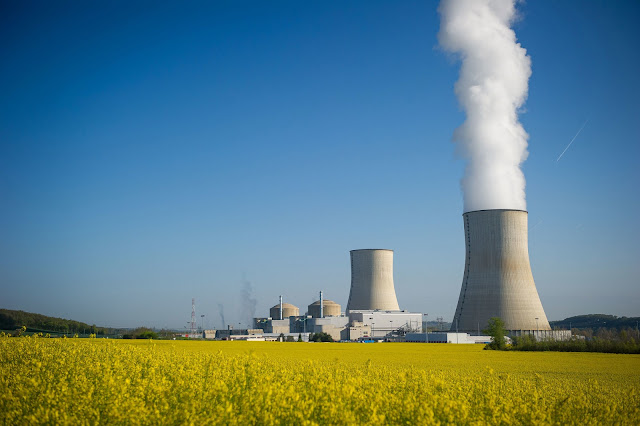In our rush to save Earth from overheating it seems we have collectively embraced the concept of trying to reduce carbon dioxide (CO2) emissions (the principal cause) by switching everything over to electric. First, of course, on the list is the automobile, of which there are approximately 1.5 billion scattered over the planet. With each one emitting of 4.5 tons of carbon dioxide every year that's a lot of potential greenhouse gas pollution (approximately 10% of global CO2 dioxide with airplanes contributing another 3%) that we could clear from the skies. But replacing gas powered vehicles with electric ones isn't the answer, more rapid transit is what we really need.
Cobalt mining the Congo
Lithium brine extraction mine in the Atacama, Chile salt flats
How could anyone think that mining these components is any less devastating for the planet and its inhabitants? While we ride around in fancy EVs the people who work these mines are lucky to have a bicycle. And this doesn't even begin to address the environmental costs of producing the copper, nickel, aluminium, and other required metals or the one kg of rare earth elements that go into every EV for the magnets and other motor parts. For examble each EV requires 75 kg of copper which is triple the amount of a conventional vehicle, and rare earth elements (which by definition are not easy to find or mine) generate 2,000 tons of toxic and radioactive waste for every ton produced. Why is it okay to have all this radioactive waste lying around but not okay to run a nuclear power plant?
Even if we ignore the damaging effects of the mining on the environment to make these EVs, we have to figure out how to re-charge their batteries on a daily basis because the charge doesn't last that long. If everyone had an EV it would easily more than double the amount of electricity required for powering the electrical grid in our cities. With coal, oil, and natural gas being the primary fuel sources (> 75%) for most of the power plants in the world, which are already producing 25% of the greenhouse gas emissions just for heat & electricity, this is only going to make the problem worse. We need power plants that produce clean sources of energy but how?
Renewables like wind, solar, or geothermal provide 2% of the energy in the world and no matter how fast they grow they will never be able to provide enough power to make much of a difference, and they are unreliable. Solar panels and windmills only last 20 years and, in addition to desecrating the landscape, they require enormous amounts of refined minerals to construct. For example, it takes 1.5 tons of coal to make one ton of steel and, according to the American Wind Energy Association, each windmill uses over 200 tons of steel. According to the Nickel Institute, each wind turbine also uses 2 tons of nickel which requires another 50 tons of coal to produce and, according to the Copper Development Association, each wind turbine contains up to 5 tons of copper which once again requires lots of coal to refine. So making the components for renewable energy is hardly a green proposition nor one that is scaleable.
Site C dam under construction
Then there is hydro power which, because it is renewable, is considered clean and green, but it's not. Dams destroy fish spawning runs, flood valuable farmland, and disrupt the ecology of hundreds of species. The destruction caused by a hydro-electric project like the Site C dam in northeastern B.C. is massive, with over 9,000 hectares of prime farmland and other habitat destroyed by the dam's construction and a 5,000 hectare reservoir. On top of that it's being built on unstable soil conditions which is now adding to the overrun costs and turning the entire project into a $16 billion dollar boondoggle that's twice the originally budgeted cost.
Nuclear power plant in France
There's only one realistic alternative to replacing the more than 40,000 fossil fuel burning power plants in the world and/or adding more capacity to the power grid and that's by using nuclear power. The eco fanatics may dream of wind and solar but it isn't green nor is it reliable, and it will never supply enough energy to power the conversion to an electric world. Nuclear power on the other hand produces no CO2, the power plants are always producing energy regardless of the weather or time of day, and the fuel cores themselves last for 3-6 years before they need replacement. There have only been three nuclear power plant accidents in the history of its use; Three-Mile Island, Chernobyl, and Fukushima and, other than Chernobyl where 29 people died from radiation exposure, nobody else has died directly. Every year air pollution and accidents have killed far more people working at hydroelectric and fossil fuel plants. Even the disposal of nuclear waste is no longer a technological problem as storage solutions have been developed, some of the waste can be re-used in the newer designs, and the latest designs have no waste at all.
We need to stop thinking of nuclear energy as some sort of scary monster. It's a myth perpetuated by oil companies and the like who hate competition and the ill informed half of the green movement who can't face facts. If we really want to reduce CO2 emissions we need to ensure every new power plant we build is a nuclear one and we need to start replacing old fossil fuel plants with new nuclear ones. Electrifying everything is only one part of the equation and if we don't embrace nuclear energy the world will turn out to be a very bitter green.








